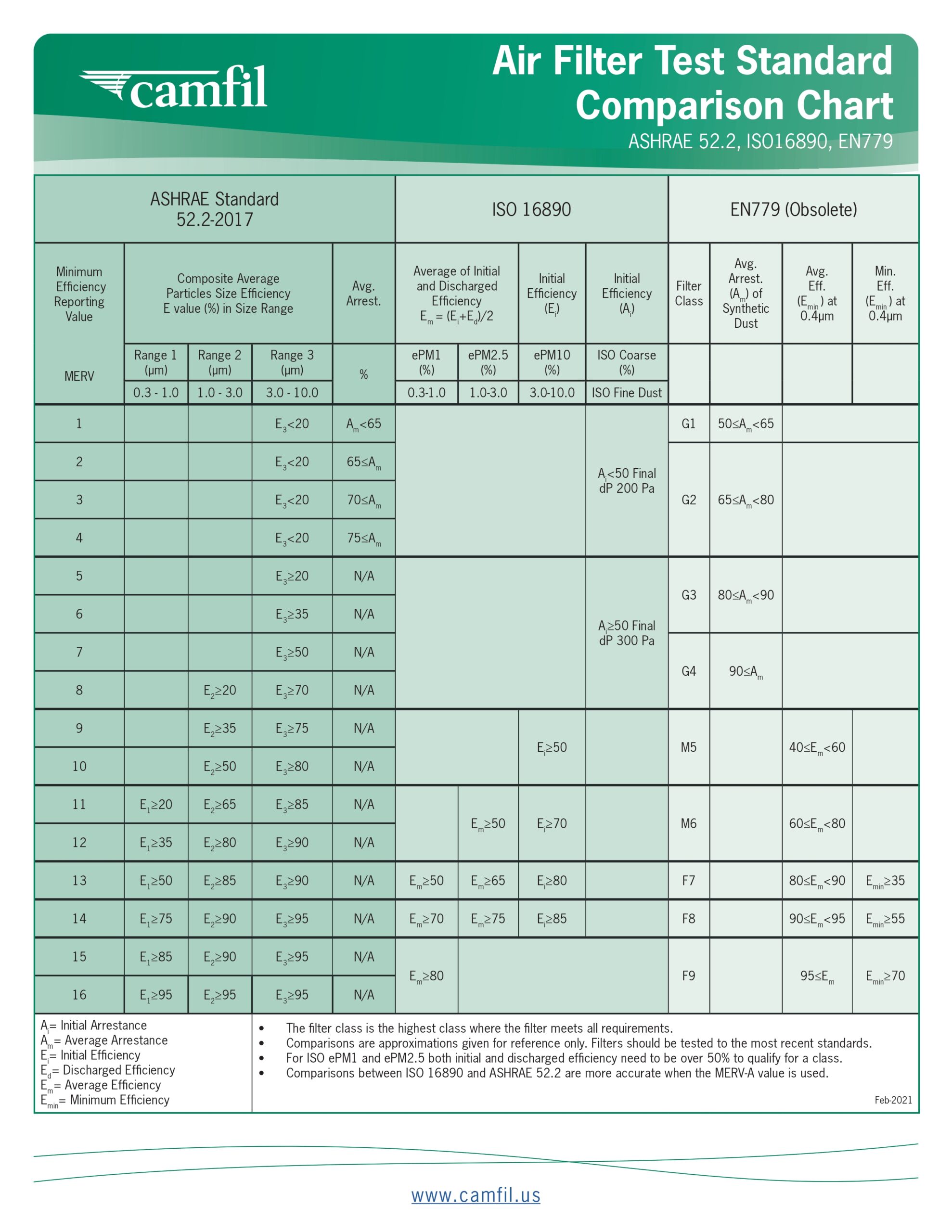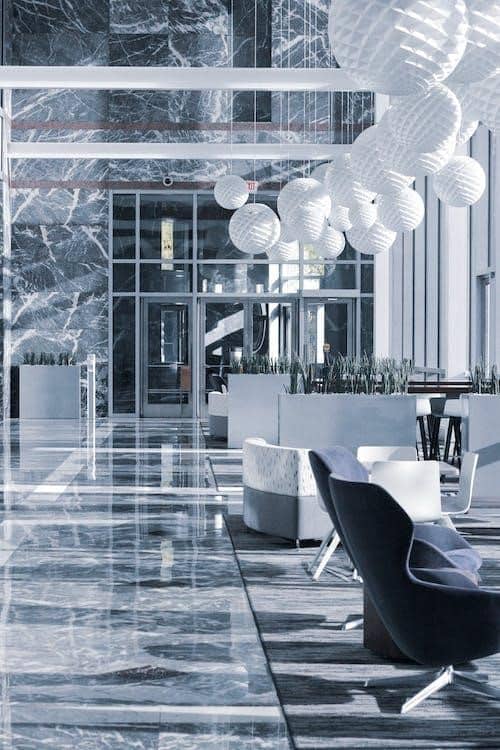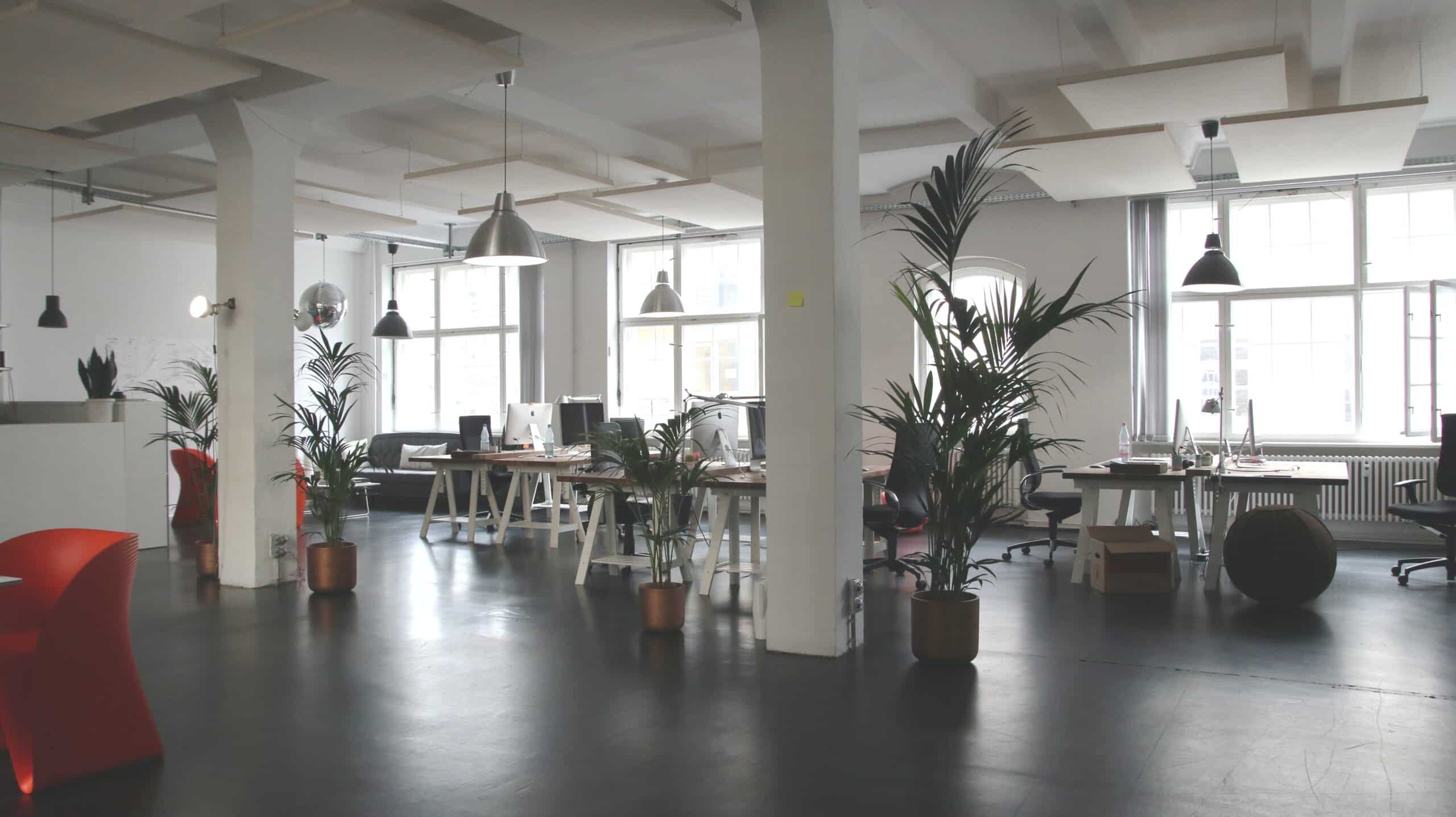A popular goal among those who participate in setting New Year’s resolutions is the commitment to exercising more often and more consistently. However, the quality of the air we breathe during workouts is an often overlooked factor that can significantly impact our performance and overall health. Just as you wouldn’t use equipment or consume products that hinder your progress or pose harm, it’s essential to hold the air you breathe to the same high standard for optimized athletic performance.
Continue reading to learn from air quality specialists about how an air purifier can protect your health and enhance your workouts.
How Does Air Pollution Affect Athletic Performance?
There is a long-standing scientific link between exposure to air pollution and declines in academic performance; these effects become even more prominent in more advanced athletes. Researchers have found that air pollution levels are predictors of athletic performance in populations ranging from average Americans to high school track runners and even Olympic athletes, with short-term air pollution exposure having greater impacts than long-term exposure.
Extensively documented evidence underscores the notable impact of exercising amidst pollutants on respiratory health as a whole. When engaging in physical exertion, even activities such as yoga and weight-lifting that may not necessarily induce breathlessness, the heightened oxygen requirement of the muscles necessitates deeper and more frequent inhalations compared to a state of rest. As a result, the amplified intake of air during exercise exposes the lungs to an increased concentration of pollutants.
When exercising, the increased rate of breathing and airflow velocity make you more vulnerable to the effects of air pollution. Keep an eye out for the following impacts during your workout:
- Respiratory irritation, including coughing, sneezing, watering eyes, sore throat, and runny nose.
- Worsening of respiratory conditions such as asthma and COPD.
- Increased likelihood of developing bronchitis and other respiratory infections.
- Dizziness, confusion, and decreased cognitive function.
For individuals at all levels of athletic ability, exercising in an environment that causes unnecessary physical discomfort and/or pain may become a deterrent from exercising altogether.
Read more: Can Air Pollution Make You Gain Weight? New Research Links Particulate Matter to Weight Gain
What Air Pollutants Are Found in Home Gyms and Fitness Centers?
While the health impacts of outdoor air pollution are a primary concern for many, it is worth noting that indoor air can be up to fifty times more polluted. Structures from previous eras were frequently constructed with stringent seals to prevent outdoor air pollution from infiltrating indoors. However, the unintended consequence of that construction technique is that it can also trap indoor pollutants and any outdoor contaminants that manage to enter through doors and windows.
Pollutants commonly found inside gyms and home gyms include:
- Particulate matter (PM). Particulate matter is a common air pollutant which is defined as any solid or liquid substance suspended in the air. There are three subcategories of particulate matter, based on the size of the particles: PM10 (anything less than ten microns in diameter), PM2.5 (anything less than 2.5 microns in diameter), and PM1 (anything less than 1 micron in diameter). The smallest particles can penetrate the lungs’ alveoli and enter the bloodstream, causing harm to major organs including the brain. Particulate matter includes common everyday pollutants such as pet dander, dust, and pollen, but can also include more directly harmful substances such as byproducts of the combustion process. The infected respiratory droplets and aerosols that are responsible for spreading COVID-19 are also classified as particulate matter.
- Carbon monoxide (CO). Carbon monoxide is a silent and invisible gas that can lead to dizziness, confusion, or even fatality. Although natural sources like volcanoes or lightning exist, it is primarily produced through incomplete combustion in everyday items such as car engines, fireplaces, lanterns, stoves, and furnaces. If your home gym is located in your garage, it is crucial to be mindful of this potentially lethal pollutant.
- Volatile organic compounds (VOCs). Volatile organic compounds (VOCs) are gaseous or molecular pollutants that commonly originate from indoor sources, such as cleaning chemicals, air fresheners, and even off-gassing from low-priced, mass-produced furniture (including exercise equipment). VOCs are characterized by high vapor pressure and a low boiling point, resulting in a gaseous state at room temperature. Benzene, ethylene glycol, formaldehyde, methylene chloride, tetrachloroethylene, toluene, xylene, and 1,3-butadiene are among the commonly found VOCs.
Other common pollutants may include nitrogen oxides (NOx) and ozone (O3).
Home Gym Air Pollution Sources
Sources of indoor air pollution in home gyms can also vary wildly, depending on the location of your home gym within your home, as well as the location of your home.
The air supply in your home gym is likely shared with the rest of your house. Consequently, the pollution generated by your day-to-day activities could potentially affect your workout sessions. The panel air filters typically utilized in HVAC systems are designed to safeguard the equipment from excessive debris. They do not offer an adequate level of filtration to safeguard human lungs against most particulate matter, nor do they provide any defense against gaseous pollutants, such as volatile organic compounds, which are a significant risk when exercising at home.
For home gyms located in garages, other uses of the space, such as tool and chemical usage, or parking a car, present additional risks of harmful air pollution.
Many people who exercise primarily at home do so in their living room, bedroom, home office, or other location used for multiple purposes. Even if you have a specifically designated space for a home gym in your house or apartment, managing indoor air pollution in the areas where you exercise is important. Indoor air pollution can have negative long- and short-term effects on your body even at rest, which are heightened during exercise when the lungs are working harder and taking in more air.
Additionally, the makeup of the air pollution inside your home is, in part, determined by where it is located. Homes located near major roadways or industrial areas will have lower indoor air quality than those with minimal nearby pollution sources unless adequate air filtration systems are put in place.
Read More: The Importance of Air Filtration in Cities with Heavy Traffic
Why Your Home Gym Needs an Air Purifier in 2024
- Reach Your Athletic Goals. Breathing clean air has been shown to increase athletic performance. When you breathe in clean air, your body is more easily able to deliver oxygen to your muscles, increasing strength and endurance. Additionally, because air purifiers help eliminate harmful airborne particles, you’ll be less likely to experience headaches, dizziness, and other short-term side effects that are likely to hinder your performance.
- Eliminate Allergens. Indoor air in houses and apartments is often full of pollen, pet dander, dust, mold spores, and other allergens, even in the winter. The presence of allergens can make exercising uncomfortable and exacerbate seasonal allergies, asthma, and other respiratory conditions. Allergens are a type of particulate matter, meaning that they can be effectively targeted by a true HEPA filter.
- Reduce Health Risks. As discussed above, breathing polluted air during exercises strains the respiratory system and poses short- and long-term health risks. Short-term symptoms include coughing, wheezing, headaches, and nausea. Long-term effects can be more serious and include respiratory diseases and heart complications. Air purifiers with activated carbon filters are particularly effective at removing harmful pollutants like ozone and volatile organic compounds (VOCs) to prevent health complications.
- Create a Comfortable Atmosphere to Stick to a Routine. Using air purifiers in your home gym to reduce indoor air pollution and increase the circulation of clean air helps to create a comfortable, rejuvenating atmosphere that will make working out a more positive experience. When working out is more physically comfortable, sticking to a routine and making exercise a habit becomes easier.
Finding the Right Air Purifier for Your Home Gym
The ideal air purifier for a home gym should be able to target both particulate matter and gaseous pollutants. For the most effective results, choose an air purifier that uses a factory-tested and certified HEPA filter (to target particulate pollution) and an activated carbon filter (to target gaseous pollutants).
To target gaseous pollutants, including volatile organic compounds, and particulate matter, use an air purifier that uses a scan-tested and certified HEPA air filter and an activated carbon filter, such as Camfil’s City M. The City M is a standalone in-room air purifier that you can plug into any standard outlet and use immediately with no special installation or HVAC specifications required.
About Camfil Clean Air Solutions
For more than half a century, Camfil has been helping people breathe cleaner air. As a leading manufacturer of premium clean air solutions, we provide commercial and industrial systems for air filtration and air pollution control that improve worker and equipment productivity, minimize energy use, and benefit human health and the environment. We firmly believe that the best solutions for our customers are the best solutions for our planet, too. That’s why every step of the way – from design to delivery and across the product life cycle – we consider the impact of what we do on people and on the world around us. Through a fresh approach to problem-solving, innovative design, precise process control, and a strong customer focus we aim to conserve more, use less and find better ways – so we can all breathe easier.
The Camfil Group is headquartered in Stockholm, Sweden, and has 30 manufacturing sites, six R&D centers, local sales offices in 35+ countries, and about 5,600 employees and growing. We proudly serve and support customers in a wide variety of industries and in communities across the world. To discover how Camfil USA can help you to protect people, processes and the environment, visit us at www.camfil.us/
##
Media Contact:
Lynne Laake
Camfil USA Air Filters
T: 888.599.6620
E: Lynne.Laake@camfil.com
F: Friend Camfil USA on Facebook
T: Follow Camfil USA on Twitter
Y: Watch Camfil Videos on YouTube
L: Follow our LinkedIn Page
The post Making Your New Year’s Resolution Last: How an Air Purifier Can Optimize Your Workout appeared first on Air Filters for Clean Air.
from Air Filters for Clean Air

 Every day, millions of passengers pass through airport terminals, inadvertently shedding particles from their luggage, skin, and clothing that pollute the air. This is compounded by diesel fumes from passenger buses and baggage wagons, and the vapors from cleaning chemicals used within the terminal.
Every day, millions of passengers pass through airport terminals, inadvertently shedding particles from their luggage, skin, and clothing that pollute the air. This is compounded by diesel fumes from passenger buses and baggage wagons, and the vapors from cleaning chemicals used within the terminal. Maintaining fresh air in the confined spaces of shopping malls and retail stores is essential for a pleasant and safe shopping environment. Research indicates that indoor air quality in malls can be up to 10x times worse than air outdoors.
Maintaining fresh air in the confined spaces of shopping malls and retail stores is essential for a pleasant and safe shopping environment. Research indicates that indoor air quality in malls can be up to 10x times worse than air outdoors. Hotel guests expect easy check-ins, clean rooms, and fresh air. In the hospitality industry, clean indoor air, along with climate control, ranks high on guests’ requests. Hotels face the challenge of filteringexternal pollution that seeps indoors, neutralizing cleaning agent odors, kitchen smoke, renovation dust, ductwork mold and bacteria, and carpet emissions. Different hotel zones like kitchens, lobbies, bars, and rooms each have unique air quality needs.
Hotel guests expect easy check-ins, clean rooms, and fresh air. In the hospitality industry, clean indoor air, along with climate control, ranks high on guests’ requests. Hotels face the challenge of filteringexternal pollution that seeps indoors, neutralizing cleaning agent odors, kitchen smoke, renovation dust, ductwork mold and bacteria, and carpet emissions. Different hotel zones like kitchens, lobbies, bars, and rooms each have unique air quality needs. Many offices have poor air circulation with outdated ventilation systems that just move unclean air from one part of the office to another. The wrong filters won’t offer the right results in removing small particles and odors in the air. Studies indicate that good indoor air quality positively affects worker productivity.
Many offices have poor air circulation with outdated ventilation systems that just move unclean air from one part of the office to another. The wrong filters won’t offer the right results in removing small particles and odors in the air. Studies indicate that good indoor air quality positively affects worker productivity. After installing the appropriate air filters, it’s crucial to properly maintain them to ensure optimal performance and extend the life of the filters and the HVAC system. Buildings should have strict protocols for routine maintenance, checks, and filter replacements. Ideally, air filters should be replaced when the resistance to airflow, aka pressure drop, increases to the point where clean airflow into the space is so restricted, proper conditions within the space are not being maintained. Air filters should not be automatically replaced such as every one to three months. Changing air filters is an expensive undertaking and should be done when the filter’s usable service life is exhausted.
After installing the appropriate air filters, it’s crucial to properly maintain them to ensure optimal performance and extend the life of the filters and the HVAC system. Buildings should have strict protocols for routine maintenance, checks, and filter replacements. Ideally, air filters should be replaced when the resistance to airflow, aka pressure drop, increases to the point where clean airflow into the space is so restricted, proper conditions within the space are not being maintained. Air filters should not be automatically replaced such as every one to three months. Changing air filters is an expensive undertaking and should be done when the filter’s usable service life is exhausted.